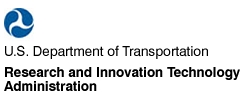UPA/CRD San Francisco
URBAN PARTNERSHIP AGREEMENT/CONGESTION REDUCTION DEMONSTRATION PROGRAM
PDF Version 750 KB
UPA/CRD Program
The U.S. Department of Transportation (USDOT) initiated the Urban Partnership Agreement/Congestion Reduction Demonstration (UPA/CRD) Program to reduce congestion through the implementation of pricing activities. Program applicants were required to include four complementary strategies, called the 4 Ts, in their proposals: 1) Tolling (or other pricing); 2) Transit; 3) Telecommuting, which includes additional travel demand management (TDM) strategies; and 4) Technology.
The discretionary funding to support the UPA/CRD Program (approximately $800 million) was drawn from 10 USDOT sources. The majority of the funding was authorized for fiscal year (FY) 2007, with the balance authorized for FY 2008 and FY 2009. For more information on these programs, see www.upa.dot.gov.
San Francisco UPA
San Francisco UPA projects focus on reducing traffic congestion related to parking in downtown San Francisco. Intelligent transportation systems (ITS) technologies underlie many of the San Francisco UPA projects, including parking and roadway sensors, payment technologies, and real-time parking information technologies such as dynamic message signs, text messaging, 511 phone, and websites.
San Francisco UPA partners include the San Francisco County Transportation Authority (SFCTA), the San Francisco Municipal Transportation Agency (SFMTA), and the Metropolitan Transportation Commission (MTC).
Projects and Status
SFpark Variable Pricing. SFpark is the name given to the parking pricing system to be implemented by SFMTA. The primary goal of SFpark is to use intelligent parking management technology and techniques, in particular demand-responsive pricing and real-time data about where parking is available, to manage demand for a portion of the on-street and off-street parking supply. SFMTA expects this approach to reduce congestion by reducing the number and duration of vehicle trips, time spent circling while searching for parking, as well as double parking. The parking technologies to be tested include networked parking meters, parking occupancy sensors, and parking information systems.
The pilot areas for SFpark are highlighted with a solid blue line on the map on page 2. The new system will consist of approximately 6,000 metered on-street parking spaces (about one-quarter of the city's total supply) and 12,250 parking spaces in 14 city-operated garages and one lot. Control areas, highlighted with a dashed blue line on the map, will be equipped with traffic sensors for monitoring use of the parking supply where variable pricing is not implemented.
To assist travelers in making choices about parking pre-trip and en-route, SFMTA will disseminate parking information in various ways. Strategically placed dynamic message signs will show parking availability in city-operated garages, and pricing information will also be displayed on SFMTA's website and by text messaging to mobile devices. The SFMTA will also provide an open data feed to the public so other organizations can disseminate the data.
511 Upgrades. The 511 phone and website system in the San Francisco Bay Area, operated by MTC, is one of the most advanced in the country, and provides a variety of multi-modal information. However, at present, the parking information on 511 is limited to static information about park-and-ride lots and rail stations (on the web) and airport parking (on the phone). The planned upgrades will provide parking space availability and pricing information for selected parking facilities in San Francisco by 511 phone and website and by information service providers (ISPs) in the region who receive a feed of 511 data from MTC. MTC will receive a real-time data feed of parking availability for parking facilities managed by SFMTA and pricing data for those SFMTA garages, lots, and on-street parking. The user interfaces on the 511 phone and website will be enhanced to disseminate the parking information to 511 customers.
Expansion of San Francisco Telecommuting/TDM Programs. Under the direction of the SFCTA, the telecommuting/TDM programs will be undertaken by the City of San Francisco's Department of Environment (DOE). In support of the SFpark and 511 enhancements, DOE and SFCTA will focus on promotion of SFpark and the 511 parking enhancements at outreach events. Through the outreach efforts, downtown workers will be better informed about the UPA initiatives and can better use the parking and information resources available to them.
Atlanta |
Los Angeles |
Miami |
Minnesota |
San Francisco |
Seattle |
Schedule for the San Francisco UPA Projects. The projects will go into operation in 2011. SFMTA will be implementing variable pricing in SFpark zones in early 2011. At that time, real-time parking information will become available via SFMTA's website and text messaging. Parking information on MTC's 511 phone and website will be available in the spring. As the SFMTA and MTC projects are deployed, SFCTA will conduct its expanded outreach and alternate commute program to promote the UPA projects.
Project Evaluation
A national evaluation team led by Battelle is assessing the effects of congestion-reduction strategies in San Francisco. The evaluation will generate information and produce technology transfer materials to support deployment of strategies in other metropolitan areas. The evaluation also will generate findings that will provide input to future federal policy program development related to mobility, congestion, and facility pricing.
SFpark Pilot and Control Zones
Source: San Francisco Municipal Transportation Agency, used with permission
For Further Information
Allen Greenberg
U.S. Department of Transportation
Allen.Greenberg@dot.gov
202-366-2425
FHWA-JPO-11-040

You may need the
Adobe Acrobat Reader to view the PDFs on this page.







